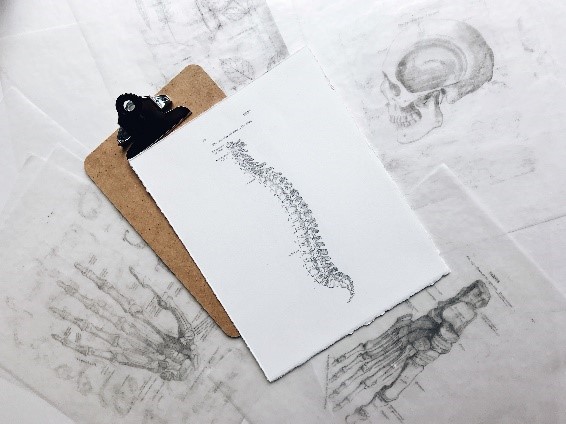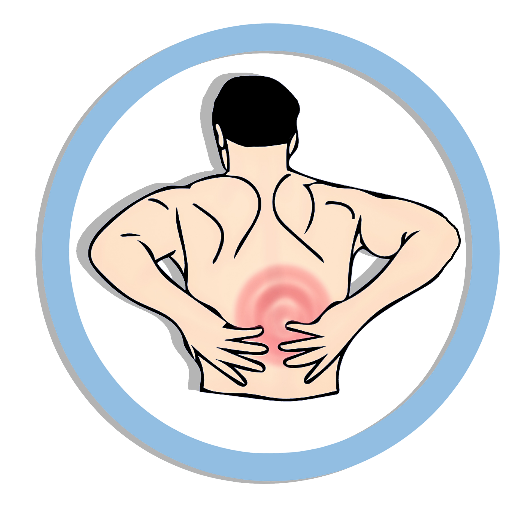What’s the difference between a disc injury and sciatica?
May 18, 2020
Image by mohamed Hassan from Pixabay
Back pain can be very debilitating and stressful. Particularly when you don’t know what is going on. Here is a quick comparison of two of the most common injuries.
Disc injury
Types of disc herniations:
- Protrusion: disc material (nucleus pulposus) bulges outward into the outer cartilage ring (annulus fibrosis) without damage to the annulus
- Prolapse: the nucleus pulposus bulges into the annulus and there is some damage to the annulus
- Extrusion: the nucleus breaks past the outer layer and into the space beyond the disc
- Sequestration: disc material breaks completely free of the annulus barrier
Usually disc injuries occur at levels L4/5 or L5/S1 in the lumbar spine. There is less protection in the posterior spine, therefore, typically disc injuries occur in the posterior lateral regions. Usually it is not a result from trauma alone. Most cases are degenerative in nature. The disc is loaded beyond its capacity and the disc fails to tolerate the force. The degradation occurs as the disc continues to have increased load and the annulus begins to weaken. Not to say that a disc herniation will always cause pain.Many people that are pain-free also have disc injury.It has been shown that 29% of people in their 20’s and 43% of people in their 80’s have disc protrusions but are asymptomatic. Pain occurs when a herniation bulges against ligaments of the lumbar spine or against the nerve root.
Causes of disc injury:
- The activity that creates the greatest load on the lumbar spine is bending forward, particularly with rotation.Think taking dishes out of the dishwasher.
- There are many disc injuries that occur with increased intraabdominal forces like coughing and sneezing.
- Valsalva maneuver, bearing down with lifting or during a bowel movement and holding your breath
Signs of disc injury:
- Commonly localized pain in low back
- Symptoms likely will radiate down posteriorly into gluteal region
- If it extends further down the leg it is due to nerve irritation
Aggravating activities
- Bending forward
- Prolonged sitting
- Twisting
- Lying for prolonged periods
- Coughing, sneezing
- Lifting
Easing factors
- Lying down with knees bent
- Walking
- Repetitive extension (see this video for McKenzie exercise.)

Sciatica aka lumbar radiculopathy
Radiculopathy is not in itself the cause of low back pain, but rather a result of other injury to the lumbar nerves. The inflammation or impingement of the lumbar nerve will result in pain, numbness, tingling and/or weakness in the lower extremities. Sciatica is a type of lumbar radiculopathy with inflammation of the sciatic nerve in particular.
Causes of radiculopathy:
- Posterior lateral Herniated disc that is impinging the lumbar nerve root
- Degenerative disc disease (DDD) decreases the disc height and decreases the space the nerve travels through from the spine and causing nerve impingement also known as stenosis
- Degenerative joint disease (DJD) can result in hypertrophy of the ligaments and enlargement of the facet joints in the spine, again stenosis occurring
- Spondylolisthesis: forward slippage of the vertebra
Signs of radiculopathy:
- Pain, numbness, tingling, weakness in a particular pattern in the lower extremity
- Sharp, shooting or burning pain
- Often the pain starts in the low back or buttocks
- Onset of pain is sudden
- Leg pain is worse than the back pain
- Most often the pain passes below the knee
Aggravating activities
- Coughing, sneezing, bearing down
- Prolonged sitting
- Moving from sitting to standing
- If due to disc herniation: lifting, bending forward, sitting
- If due to stenosis or degenerative discs or joints: standing or bending backwards
Easing factors
- Depends on the cause of the radiculopathy
- See this video on nerve gliding
As always, if you are currently experiencing pain, we highly recommend seeking professional treatment in order to have formal diagnosis.Treatment at Arvada Sport and Spine will involve a thorough examination, appropriate hands-on treatment and a home program designed to get you back to the activities you love!
Sources
Sueki D, Brechter J. (2010). Orthopedic Rehabilitation Clinical Advisor. Mosby, Inc.
W. Brinjikji, P.H. Luetmer, B. Comstock, et al. Systematic Literature Review of Imaging Features of Spinal Degeneration in Asymptomatic Populations AJNR Am J Neuroradiol.2015 Apr; 36(4): 811–816. Published online 2014 Nov 27. doi: 10.3174/ajnr.A4173 Accessed 4/6/20.
Follow us on Facebook, Instagram and YouTube for more tips, videos and information!



